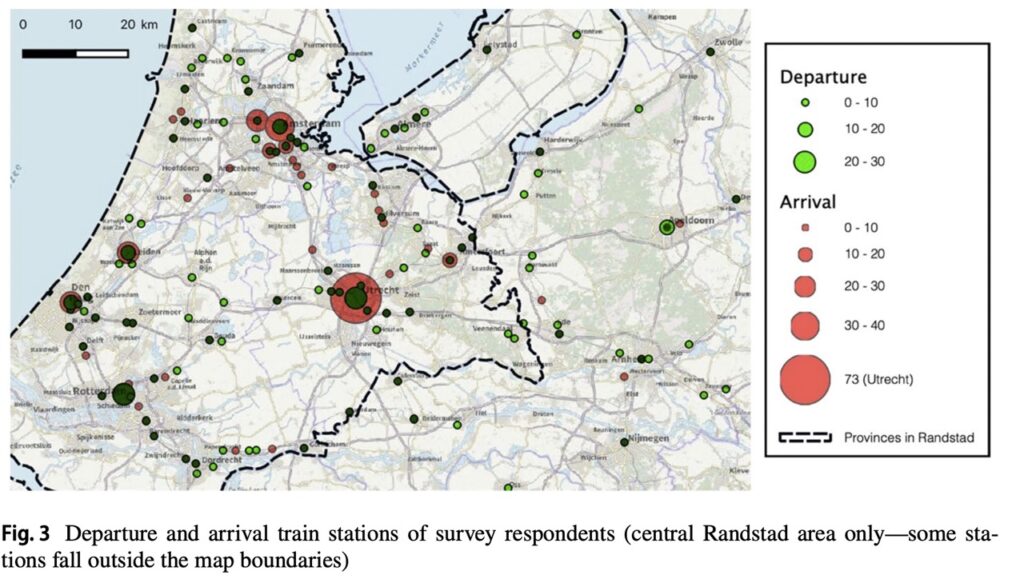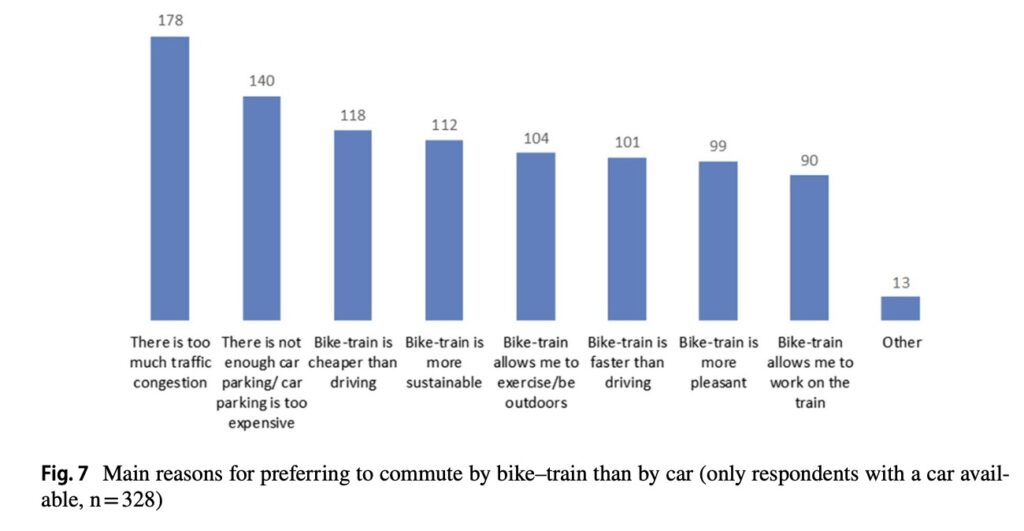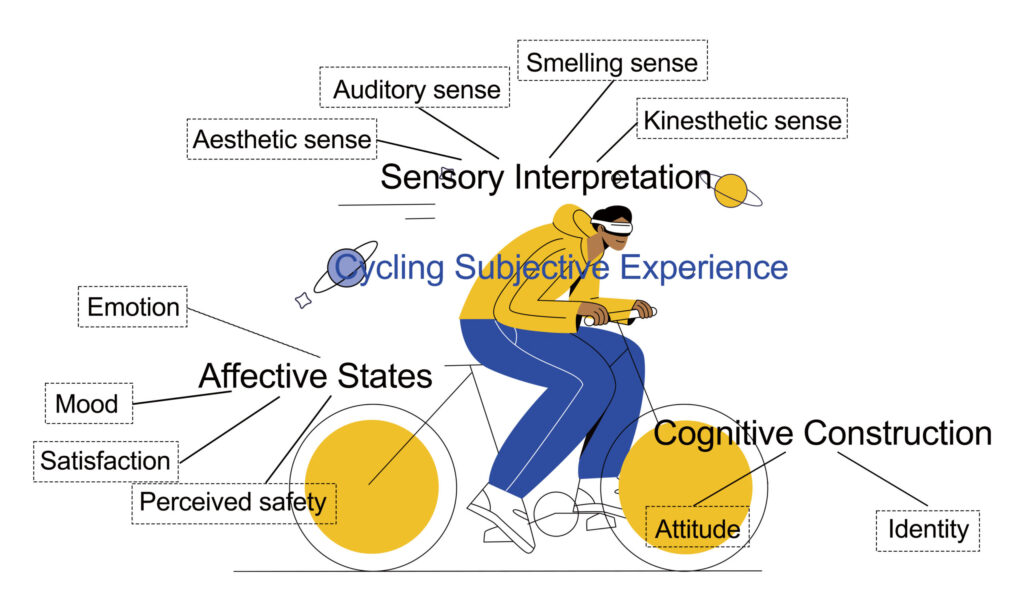The combined use of the bicycle and the train as part of a single trip is extremely popular in the Netherlands, where almost half of all train travellers reach the train station by bike. Indeed, both modes of transport reinforce each other: cycling makes it easier for people to quickly get to the train station, while a good rail network greatly extends the range of places cyclists can access (by hopping on the train). In recent years, the popularity of the bike-train combination has increased markedly: from 2005 to 2016, the share of train travellers arriving to the train station by bike grew from 36 to 44%.
What, however, are the underlying processes which explain the ongoing growth of bike-train trips in the Netherlands? And are new bike-train trips replacing car trips, or trips already made by other sustainable transport modes? Our recently published research article seeks to explore these questions. To this end, we carried out an online survey targeting people in the Randstad region who have begun commuting by bike-train over the past five years. By collaborating with research company Kantar, we were able to identify eligible respondents out of a survey panel with approximately 200,000 individuals throughout the Netherlands, which led to a representative sample of 493 respondents. This survey asked about the main reasons why respondents had started commuting by bike-train, and what their previous travel patterns used to look like.

Overall, the results of the survey suggest that we can distinguish three main types of respondent profile with different reasons for starting to commute by bike-train:
- People who are dissatisfied with their existing commuting mode, and decide to switch to commuting by bike–train instead. By and large, people in this category fall into two groups: car drivers, and people who already took the train, but who instead of cycling used to reach the station by public transport or by foot.
- People who start travelling by bike–train following a change in their work or home location which leads them to re-evaluate their commuting options. Within this category, the largest group corresponds to people who previously used to make a cycling-only trip, but whose new trip is too long to cycle. The second largest group corresponds to previous car drivers who find that bike–train provides a better alternative for their new commuting trip.
- People who did not use to make any regular commuting trips, but who start to commute by bike–train after beginning a new job or study. Typically, respondents choose to travel by bike–train above other transport option simply because they see it as the most effective choice available to them.
Interestingly, the results of our survey reveal that 21% of respondents who started commuting by bike-train previously used to drive a car instead (on the same or a different journey). In addition, it shows that 66% of respondents have a car available, but prefer to commute by bike-train. Among the various reasons for this, traffic congestion and the lack and expense of car parking appear to be particularly important ones. Indeed, respondents’ answers tend to suggest that “push” factors are generally more important than “pull” factors in encouraging people to start travelling by bike-train. Nevertheless, the desire to be outdoors, exercise and travel more sustainably were also mentioned by many respondents as contributing to their choice to start commuting by bike-train.

A final interesting point to note is that the large majority of respondents already cycled regularly at a local level before beginning to travel by bike–train: almost 50% reported cycling daily, with a further 31% cycling a few times a week. These results must be understood within the Dutch context, where cycling is a common activity for most people. Nevertheless, they suggest that cycling regularly at a local level may typically be a precondition for starting to travel by bike-train: in other words, someone is relatively unlikely to consider using the bike-train combination unless they already are used to cycling frequently. For other countries thinking seeking to encourage combined bike-train trips, this means it might be difficult to do so without a critical mass of cyclists at a local level. As we put it in the article, “attempting to promote bike–train use level in the absence of an established local cycling culture at a local seems akin to putting the cart before the horse”.
For a more detailed account of our study and its results, the full publication can be freely accessed here.
Nello-Deakin, S., Brömmelstroet, M.t. Scaling up cycling or replacing driving? Triggers and trajectories of bike–train uptake in the Randstad area. Transportation (2021). https://doi.org/10.1007/s11116-021-10165-9



